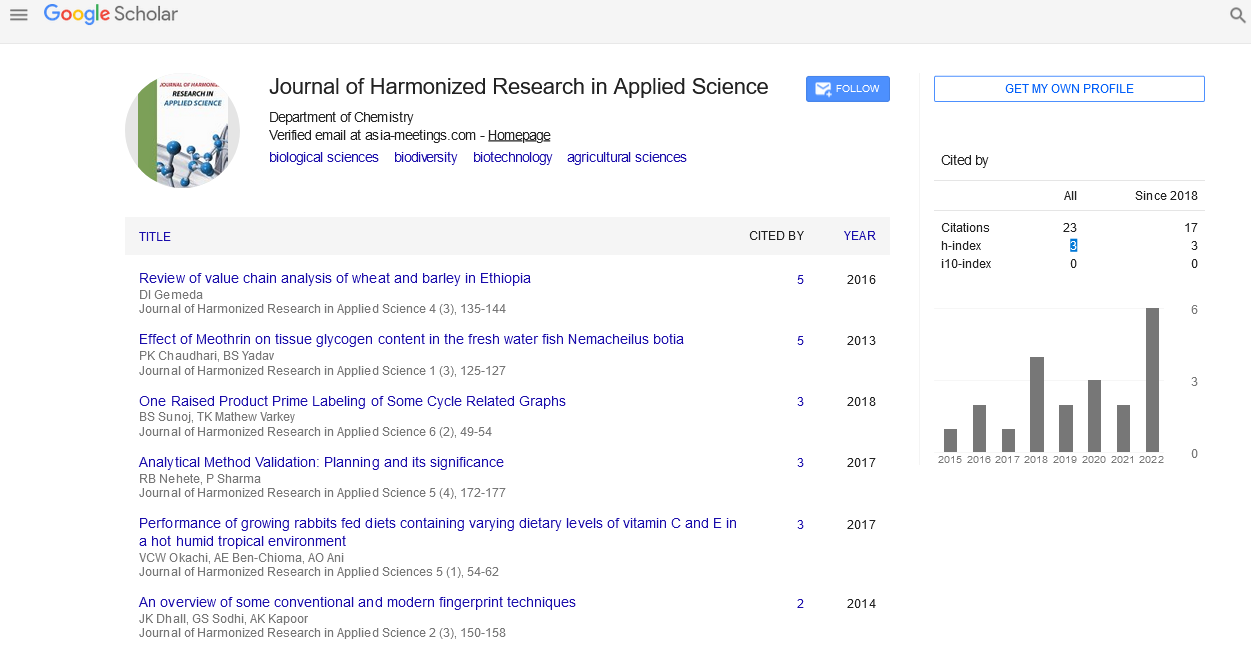Commentary - (2022) Volume 10, Issue 3
ADVANCEMENTS IN MICROBIAL AND ENZYMATIC DEGRADATION OF PLASTICS
Moundji Tourafia*Received: Aug 26, 2022, Manuscript No. JHRAS-22-78043; Editor assigned: Aug 30, 2022, Pre QC No. JHRAS-22-78043(PQ); Reviewed: Sep 14, 2022, QC No. JHRAS-22-78043; Revised: Sep 21, 2022, Manuscript No. JHRAS-22-78043(R); Published: Sep 28, 2022, DOI: 10.30876/2321-7456.22.10.002
Abstract
Description
Plastic pollution has been prevalent in the world ever since its use in majority of the areas including packaging, electronic industries, building and construction, healthcare. This has led to a constantly increasing burden on the environment which has attracted many environmentalists and scientists towards working on different ways to cope up with this threat. Many studies have been done to find out ways to naturally degrade plastics using hidden capabilities of microbes that can use these plastics as their sole carbon source. Enzymatic degradation of plastics has served this purpose since the discovery of microbial enzymes capable of acting on plastics in their natural environment. This is because it is a much faster and more efficient method compared to other methods. This paper provides an overview of enzymatic degradation of plastics from a variety of sources.
Plastic dumped in the ocean kills millions of marine animals each year, including endangered species. Entanglement and suffocation are some of the most common reasons leading to the death of many animals on land as well as in the ocean. The accumulation of plastic waste in the environment has led to the use of methods such as incineration to dispose of the waste will cause chemical contamination. Chemicals used in the manufacturing steps of plastics such as ethylene, vinyl chloride, terephthalic acid and bisphenol are the most commonly used in consumer plastic products and have harmful effects on human health, cancer, It causes endocrine disorders, birth defects and other diseases and many other health problems. Synthetic plastics play such a central role in our lives today that their accumulation poses major problems for the environment and human health. Polyethylene, polyethylene terephthalate, polyurethane, polystyrene, polypropylene, polyvinyl chloride Petroleum-derived polymers are highly resistant to natural biodegradation pathways. Several microorganisms with the ability to degrade petroleum polymers under in vitro conditions have been isolated and characterized. In some cases, enzymes expressed by these microorganisms have been cloned and sequenced. The biodegradation rate of polymers depends on several factors such as chemical structure, molecular weight and crystallinity.
Polymers are large molecules having both regular crystals (crystalline region) and irregular groups (amorphous region), where the latter provides polymers with flexibility. Highly crystalline polymers like polyethylene (95%), are rigid with a low capacity to resist impacts. PET-based plastics possess a high degree of crystallinity (30-50%), which is one of the principal reasons for their low rate of microbial degradation, which is projected to take more than 50 years for complete degraded in the natural environment, and hundreds of years if discarded into the oceans, due to their lower temperature and oxygen availability. The enzymatic degradation occurs in two stages: adsorption of enzymes on the polymer surface, followed by hydro-peroxidation/ hydrolysis of the bonds. The sources of plastic-degrading enzymes can be found in microorganisms from various environments as well as digestive intestine of some invertebrates.
Microbial and enzymatic degradation of waste petroleum plastics can be used to either depolymerize waste petroleum plastics into polymeric monomers for recycling or mineralization to convert waste plastics into higher value bio-products such as biodegradable polymers. The microbial degradation of synthetic plastics are Obtained from renewable raw materials. Biodegradable plastics are important in various industries such as packaging, agriculture, paper coatings, garbage bags and biomedical implants. Increased contamination of water and waste by available plastic degradation methods has led to the emergence of biodegradable plastics and their biodegradation by microbial (bacterial and fungal) exoenzymes. Microorganisms use biodegradable polymers as substrates in conditions of starvation or in the absence of microbial nutrients. Microbiological enzymatic degradation is suitable from a bioremediation point of view as it does not result in waste accumulation. Intensive research is needed to improve fermentation techniques for the economical and efficient production of enzymes from microorganisms. The recent patent, purification parameters, and characterization of poly-D-3- hydroxybutyrate depolymerizes are also very common in nature and have many applications in biodegradable plastics.










